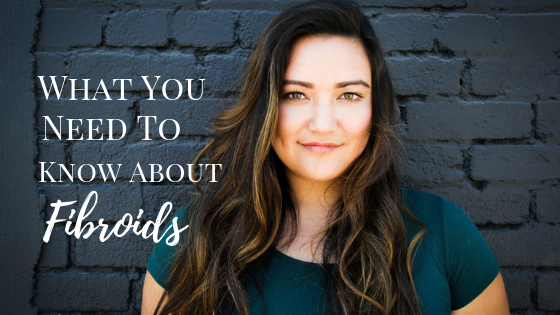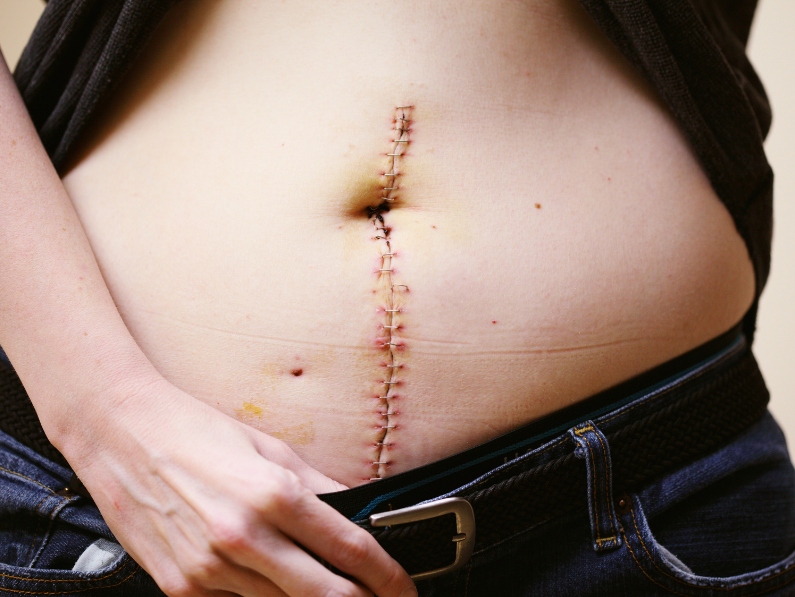A common fact you may not know about fibroids is that on average 70-80% of women of childbearing age will develop them. Furthermore, women may not know they have an issue with fibroids due to a general lack of awareness regarding what fibroids are and what symptoms to look out for. And if you are a woman between the ages of 30-40 years old your risk of developing fibroids is increased. Thus the need to understand what fibroids are and what to do if you suspect you may have fibroids.
Page Contents
So What Exactly Are Fibroids?
Specifically, fibroids are noncancerous growths that develop in the uterus. They range in size and can be so small that they are practically undetectable or they may develop into large masses that cause abdominal distention. It is also common to experience multiple fibroid growths at the same time.

As for what causes these noncancerous tumors to develop that is a bit of a mystery. It is suspected that genetic changes cause fibroids to grow and develop. In addition to genetics female sex hormones, estrogen and progesterone are thought to possibly encourage the growth of fibroids. They are developed from stem cells found in the uterus known as the myometrium. Once triggered these stem cells divide and begin to build a mass of firm, rubbery tissue. In regards to how fast these growths develop they can grow slowly or rapidly. And in some cases, they may even shrink on their own.
Common Types of Fibroids
It is possible for fibroids to grow and develop in and around the uterus. So depending on where the fibroid grows and develops will determine what type of fibroid it is. There are three common types of fibroids which are known as intramural, subserosal, and submucosal. In addition to these common fibroid types, there is one type of fibroid that occurs in rare instances known as pedunculated fibroids.
Intramural fibroid growths develop within the wall of the uterus and may contribute to changes in the shape of the uterus. This is dependent on how big the growth is. Subserosal fibroid growths are commonly found outside the uterus and can contribute to issues with heavy bleeding. Submucosal growths are similar to intramural fibroid growths because they can distort the shape of the uterus. These growths develop underneath the uterine lining. Lastly, pedunculated growths develop on stalks outside of the uterus. It is important to note that multiple fibroid types can occur simultaneously.

Signs & Symptoms to Look For
Common issues that you may experience if you have an issue with fibroids include:
- Experiencing an abnormally heavy period flow which may include blood clots.
- Painful periods with “killer cramps”
- Spotting or bleeding in between periods.
- Prolonged periods that last beyond 7 days.
- Feeling of pressure in your lower abdomen
- Ongoing pelvic pain.
- Increased need to urinate.
- Feeling as though you can’t adequately empty your bladder.
- Developing an issue with constipation.
- Having back pain especially low back pain and leg pain.
Although it is common to experience some type of sign or symptom which will alert you to an underlying issue. There are rare cases in which fibroids go undetected because there were no signs or symptoms experienced at all.
Risk Factors & Complications To Be Aware Of
As with many reproductive health dysfunctions, there are risk factors that increase the likelihood of you developing fibroid tumors. And there are complications that can arise from having fibroid growths.
Common risk factors associated with fibroids are:
- Being a woman of reproductive age, especially during the ages of 39-40.
- If your mother or your sister had fibroid tumors this will increase your risk.
- African-American women are more prone to fibroid growths and can experience them at an earlier age.
- Having high blood pressure or being overweight/obese may also increase your risk.
When it comes to complications that may arise due to fibroid tumors you may have issues with anemia due to excessively heavy menstrual bleeding which contributes to iron deficiency. Secondly, infertility may be an issue but this depends on the type of fibroid tumor that you have. Submucosal and intramural growths are known to interfere with implantation due to the fact that they alter the shape of the uterus. Additionally, if they are rather large they may actually block the fallopian tubes which interfere with fertilization and implantation and can increase the risk of ectopic pregnancy. Lastly, preterm labor is another complication that can arise with fibroids. This is due to the positioning of the baby inside the uterus and may also cause heavy bleeding after delivery.

Do You Suspect Fibroids?
So, what should your next steps be if you find that you are experiencing the above symptoms and you have factors that increase your risk of fibroids? First thing you should do is schedule an appointment with your gynecologist. In preparation for this appointment make sure you track and log all the symptoms you are experiencing including date of onset. Make sure to pay close attention and track symptoms such as consistent pelvic pain, heavy prolonged periods, bladder issues, and spotting in between periods.
When you are at your appointment you also want to disclose all pertinent health history information such as hereditary information, sexual history, menstrual history, bowel issues, bladder complications, painful periods, and fertility plans. Be as specific as possible and go into as much detail as needed. This will help to paint a full picture for the doctor so they will know what tests to perform.
Consequently, you should expect to receive a pelvic exam as well as some type of imaging test. Common imaging tests that are administered are ultrasound, MRI, and CT Scan. Also depending on your desire for starting a family it may be beneficial to have an HSG (hysterosalpingogram) administered to identify if there are any blockages or abnormalities present within the reproductive organs.
With this in mind, it’s important to understand that fibroids are not life-threatening or dangerous. But they can cause unpleasant symptoms and increase negative complications that can be prevented with proper diagnosis and treatment. Being aware of your risk factors and knowing more about what fibroids are can help you identify problematic signs and symptoms and seek help.
About the Author.

Join My Email List!
Receive my FREE Course The Beginners Guide to Anti-Aging and get my blog posts delivered directly to your inbox.
[gravityform id=”1″ title=”true” description=”true”]






